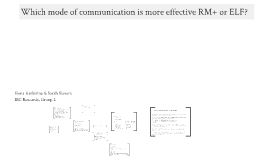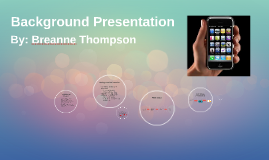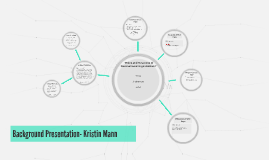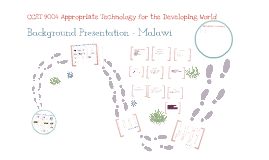Background of American Literature
Transcript: Phuong Nguyen Professor Gordon American Literature ENGL 2327 23 March 2020 Background of American Literature Topic Topic Topic Topic Topic Topic Topic Topic Topic Topic Topic Topic Topic Topic Topic Topic Topic Topic Topic Topic Topic Topic Topic Topic Topic Topic Topic Topic Topic Topic Topic Topic Topic Topic Topic Works cited Topic “13 Interesting Facts About the 13 Original Colonies.” Brainscape Blog, 20 Jan. 2017, www.brainscape.com/blog/2014/07/13-interesting-facts-13-original-states/. “How to Govern, and How to Obey.’” National Parks Service, U.S. Department of the Interior, www.nps.gov/jame/learn/historyculture/martial-law.htm “How the American Puritans Were Like the Bible's Israelites.” The Founding, 15 May 2019, thefounding.net/the-puritans-identified-with-the-israelites-and-practiced-covenants/. Iainska. “The Moral Values of RIP Van Winkle.” The Moral Values of RIP Van Winkle, Blogger, 31 Oct. 2018, babyburndududu.blogspot.com/2018/10/the-moral-values-of-rip-van-winkle.html. Jules, Marima. “Tabula Rasa.” The Silver Scribe, rhssilverscribe.org/3230/features/tabula-rasa/. Puritan Girl, www.sonofthesouth.net/revolutionary-war/pilgrims/puritan-girl.htm. “Succeeding in the New World – Colonial America.” STEM: Colonial America, colonialamerica.thinkport.org/welcome-to-colonial-america.html. Topic Topic Admin. “Benjamin Franklin Inventions - Founding Fathers of the United States.” History of Indian Subcontinent, 26 May 2019, www.history-india.in/benjamin-franklin-inventions/. “Colonial Clothing.” Colonial Clothing ***, www.landofthebrave.info/colonial-clothing.htm. Cohen, Jennie. “Did Jamestown's Settlers Drink Themselves to Death?” History.com, A&E Television Networks, 18 Oct. 2011, www.history.com/news/did-jamestowns-settlers-drink-themselves-to-death. “Foundations and Puritan Literature.” English III American Literature, mskellysenglishclassnhs.weebly.com/foundations-and-puritan-literature.html. Kelly, Martin. “How the Massachusetts Bay Colony Was Founded.” ThoughtCo, ThoughtCo, 3 July 2019, www.thoughtco.com/massachusetts-colony-103876. Limited, Alamy. “Stock Photo - Some Old Time Meeting Houses of the Connecticut Valley . Om, Once Sup-Ported the Pulpit, but Were Removed and Allowed Togo to Decay When the Attempt Was Made in 1860.” Alamy, www.alamy.com/some-old-time-meeting-houses-of-the-connecticut-valley-om-once-sup-ported-the-pulpit-but-were-removed-and-allowed-togo-to-decay-when-the-attempt-was-made-in-1860-tomodernize-the-interior-of-the-house-it-was-at-thistime-that-the-pulpit-was-lowered-the-backs-of-thepews-were-also-lowered-and-the-doors-at-the-ends-ofthe-pews-taken-off-the-pulpit-was-lowered-again-in1885-the-fish-which-serves-as-a-weathervane-is-inter-esting-it-is-left-to-the-reader-to-decide-whether-itrepresents-a-connecticut-river-shad-or-the-symbol-offaith-employed-by-the-early-christians-chicopee-fallsthe-members-of-t-image338357406.html. McBride, Kevin. “Pequot War.” Encyclopædia Britannica, Encyclopædia Britannica, Inc., 9 Apr. 2019, www.britannica.com/topic/Pequot-War. Ofgang, Erik. “Rethinking Connecticut's First War.” Connecticut Magazine, 6 Mar. 2017, www.connecticutmag.com/the-connecticut-story/rethinking-connecticut-s-first-war/article_145382de-04df-5f1d-a152-f0d60ab7842c.html. “Puritan New England: Massachusetts Bay (Article).” Khan Academy, Khan Academy, www.khanacademy.org/humanities/us-history/colonial-america/colonial-north-america/a/puritan-new-england-massachusetts-bay. Pauline, Clara. “Puritanism in John Winthrop's Sermon ‘A Model of Christian Charity’ from 1630.” Medium, Medium, 15 Mar. 2015, medium.com/@ClaraPauline/puritanism-in-john-winthrop-s-sermon-a-model-of-christian-charity-from-1630-70b565a355fd. Silverman, David J. “Thanksgiving Day.” Encyclopædia Britannica, Encyclopædia Britannica, Inc., 16 Jan. 2020, www.britannica.com/topic/Thanksgiving-Day. Topic “AIroquios Creation: Native American Art, Creation Story, Native American Myths.” Pinterest, www.pinterest.com/pin/758575130956342791/. Bookmachine. “Native American Creation Stories.” Jesse's Blog, 1 Jan. 1970, jesselatour.blogspot.com/2012/12/native-american-creation-stories.html. Cartagena, Yeceli. “Iroquois Creation Story And Christopher Columbus.” Medium, Medium, 4 Feb. 2018, medium.com/@shelyheart21/iroquois-creation-story-and-christopher-columbus-8af0f77af711. “Creation, the Western New York Version (an Iroquois Creation Story).” Misterjsnodgrass, 16 Jan. 2018, misterjsnodgrass.wordpress.com/2018/01/16/creation-the-western-new-york-version-an-iroquois-creation-story/. Iroquois Man, web.pdx.edu/~caskeym/iroquois_web/html/iroquoisman.htm. Miller, Mark. “Surviving a Hostile New World: The Iroquois Confederacy's Struggle Against Disease, Starvation, Enslavement and Warfare.” Ancient Origins, Ancient Origins, www.ancient-origins.net/history-ancient-traditions/iroquois-confederacy-0010757. “Native American Constellation Stories: Native American Artwork.” Pinterest, www.pinterest.com/pin/1759287329974700/. Alesi,

















